With an influx of new Jane Austen inspired short stories and novels hitting the market, authors are looking for the best way to get readers’ attentions. Regina Jeffers has written Christmas at Pemberley, in which Georgiana Darcy must embrace the challenges of her hostess duties while her brother and his wife, Elizabeth, are stranded in a small town on the way to Pemberley by a blizzard. Jeffers uses the Christmas season to bring the Darcy, Bennet, and Bingley families under one roof, and you can imagine what kinds of rivalries and misunderstandings will occur.
Today, Regina will give us a sneak peek into her writing space and habits. It also seems that we share a certain Mr. Darcy obsession, and my husband would definitely love her selection of NFL Quarterback since he loves the Miami Dolphins.
Finally, one lucky reader will receive a copy of her book by entering the giveaway below. Without further ado, please welcome Regina:
For writing my novels, I prefer to have everything within my reach. Purposely, I separate where I actually compose my books from where I word process and edit my novels. I need the “disconnect” in order to separate the steps. I write my novels in spiral notebooks, usually wide ruled because I write large. I know from experience that 30 pages of my handwritten story equals ten pages of typed text (Times New Roman, 12 point font). I, personally, hate to read chapters that are longer than ten pages so I have trained myself to work toward that goal. If you read my novels, you’ll note the consistency in the length of my chapters.
Regina's Favorite Chair!
I love the reflected sunlight of this room. In the Regency period, this would have been a small sitting room used for waiting guests to be announced to the master. Note the lap desk, encyclopedic dictionary, and synonym finder beside my favorite chair. Some day, I will have to have this chair reupholstered. I fear my “inspiration” lies in the lumpy cushions. Normally, there is a cup of tea sitting on the nearby table. I brew my own – no American tea bags for me. One can also see my journal sitting at the side, along with my Bible. This is where the creative process comes about.
Once I have written the book, I retreat to my “office” space to do the hard work. My office is the smallest of the three bedrooms in my North Carolina home. From the window, I overlook the curve of the cul de sac upon which I live. Not much happens in this small incorporated village, something I appreciate. It is quiet and relatively crime free. When I first moved here in 2003, “Miss Kitty,” my neighbor, brought me over a chocolate cake. (I didn’t tell her that I prefer white cake to chocolate. It would be rude.) I love the South!!!
Matthew Macfayden Photos
The office reflects my eclectic tastes. I love oversized furniture. The walls hold my “interests.” Of course, there are multiple pictures of Matthew Macfadyen. I enjoy Colin Firth’s work (am a big fan), but I really LOVE Matthew. All the pictures are signed. Yes, I realize this is an obsession, but daily I remind myself that the word “fan” comes from “fanatic.” (BTW, I have seen “The Three Musketeers” six times to date.) I use post it notes of different colors to keep track of appearances, guest blogs, etc.
Miami Dolphins Quarterback Chad Pennington
I also am a big fan of Chad Pennington, the NFL quarterback. He attended Marshall University, where I went to school, but my respect for Pennington comes from his kindness to my son during the difficult period when my mother was dying. He showed himself to be a true gentleman. In Darcy’s Temptation, Chadwick Harrison is so called because of Pennington.
Although I do not write much outside, I often take a cup a tea and a bit of research of which I want to peruse and sit in one of the two “cozy” spaces I have created. The first is a sheltered area at the front of my house. I bricked it all in and set up the potted plants and benches. I loved my hybrid roses and the hibiscus, but mums and pansies surround the area also. In North Carolina, the vegetation lasts well into late November. Behind my house, there is another bench draped by a weeping willow. It serves the purpose well.
So, this is where I have managed to write twelve novels (Darcy’s Passions, Darcy’s Temptation (a 2009 Booksellers’ Best Award finalist), Vampire Darcy’s Desire, Captain Wentworth’s Persuasion, The Phantom of Pemberley (took 3rd in romantic suspense for the SOLA Awards), Christmas at Pemberley, The Scandal of Lady Eleanor, Honor and Hope, A Touch of Velvet, A Touch of Cashémere, First Wives’ Club, and Second Chances), in addition to two novellas (His Irish Eve and His American Heartsong) and one short story (“The Pemberley Ball”) in a little over four years.
Christmas at Pemberley is my newest release and is currently available. I have a December 1 deadline for The Disappearance of Georgiana Darcy, which will take up where Christmas at Pemberley leaves off, but it will be a cozy mystery, rather than an inspirational romance. I am working on two others (one Austen, one non-Austen) at the same time. This is my Writing World. Quite simple. Quite plain. All me.
Thanks, Regina for sharing your writing space with us.Please also check out the slide show of the remaining photos from her writing space.
For those readers interested in reading about the Darcys, Bennets, and Bingleys during the holidays, enter the giveaway below.
1. Leave a comment about what you found most interesting about Regina’s writing space.
2. For up to 3 more entries, share the giveaway on your blog, Facebook, and Twitter, and leave a link for each in the comments.
3. Follow Savvy Verse & Wit for another entry.
Deadline is Nov. 18, 2011, at 11:59PM EST (US/Canada only)








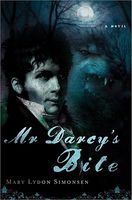


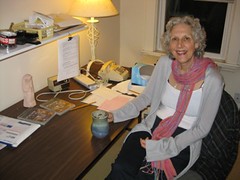
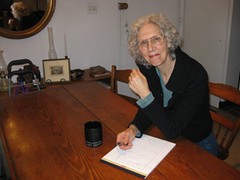
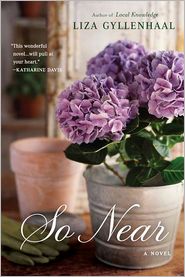 Today’s guest is
Today’s guest is 





 A month after the release of
A month after the release of  I’m impatient with my disorganized, scattered process. A no-nonsense voice tells me to sit up straight at my desk and focus. “Stop scribbling and start typing,” says that strident voice. “And for God’s sake get the cat off the table.”
I’m impatient with my disorganized, scattered process. A no-nonsense voice tells me to sit up straight at my desk and focus. “Stop scribbling and start typing,” says that strident voice. “And for God’s sake get the cat off the table.”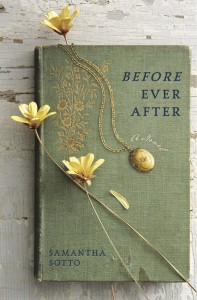
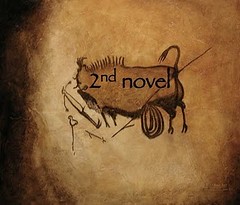
 There are arguably less life-threatening dangers surrounding us today, but one doesn’t need the threat of a horrible death to need sanctuary. Whether it’s a quiet place to put our feet up and inhale cupcakes or a spot to hunker down with the iPad and break our Angry Birds record, we need to stake out a little corner of the Earth for ourselves, even for just a little while. It doesn’t have to be anything fancy. It simply has to be large enough to stretch our legs and spirits – without leaving any room for guilt. In this magical cave, for a stolen moment, it’s okay to not care about anyone but yourself.
There are arguably less life-threatening dangers surrounding us today, but one doesn’t need the threat of a horrible death to need sanctuary. Whether it’s a quiet place to put our feet up and inhale cupcakes or a spot to hunker down with the iPad and break our Angry Birds record, we need to stake out a little corner of the Earth for ourselves, even for just a little while. It doesn’t have to be anything fancy. It simply has to be large enough to stretch our legs and spirits – without leaving any room for guilt. In this magical cave, for a stolen moment, it’s okay to not care about anyone but yourself.



 About the Author:
About the Author:


